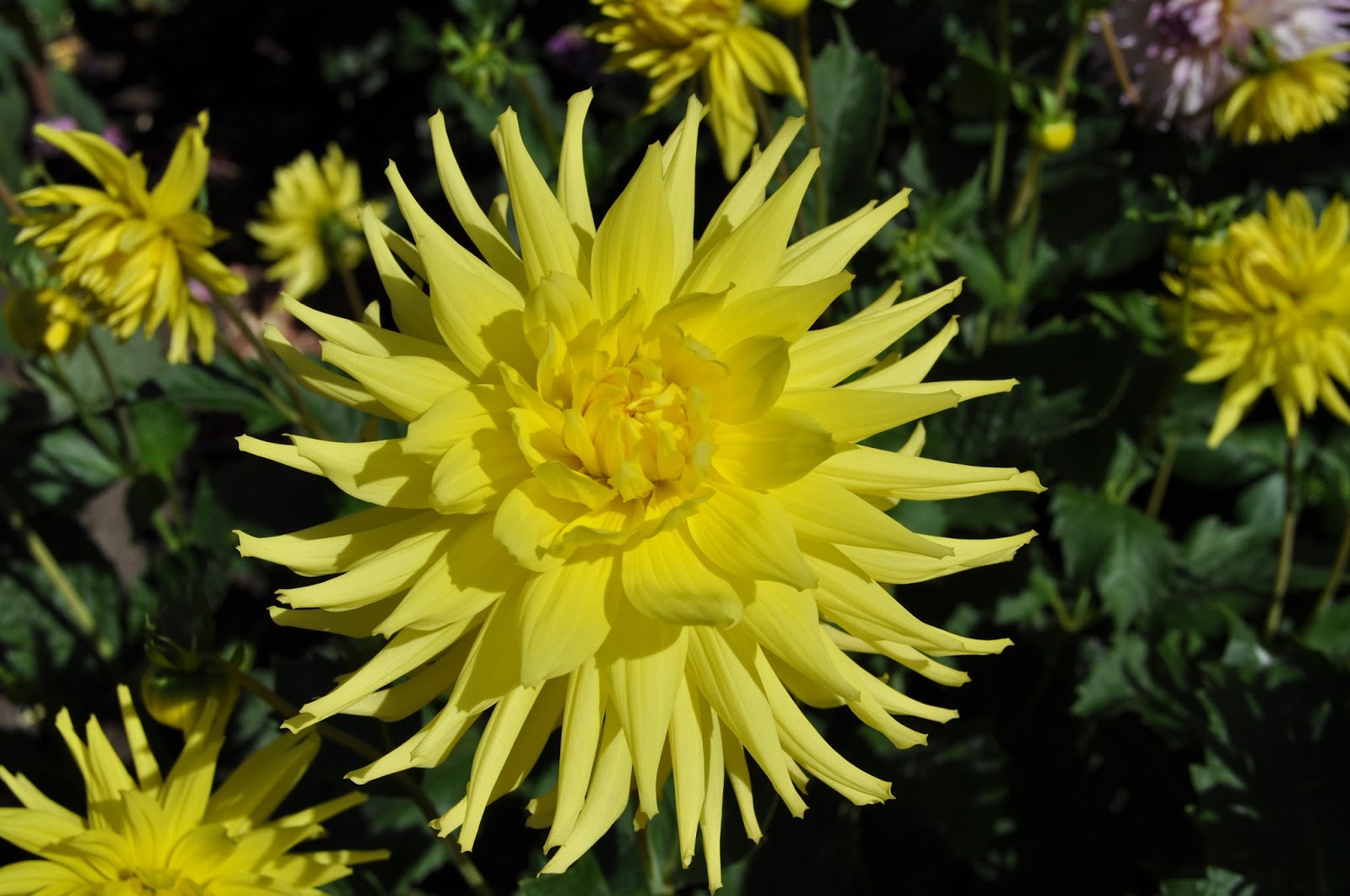Picasso's period of painting in monochromatic blues was his artistic expression of a time of depression and melancholy. Last time I was depressed I read a self-help book, drank a bottle of wine, and took my Rx. Anyhow, I get it, his paintings are awesome (and here I know I cannot compete nor make any half-assed attempt to do so), but I find blue very restoring and unique in the plant world. It seems a rather rare color to occur naturally--especially clear blue flowers such as the ones on this page. Anthocyanin rich, and pH-dependent (in terms of what color profile is expressed) these blue flowering plants can really cool down the hottest landscape. Use blue cautiously though, as it can overtly be noticeable in the garden.
Plumbago auriculata is probably cold-hardy between USDA zones 7-11 (if you make your gardening decisions based on hardiness ratings, you need to stop, as they are fairly unrepresentative to what can grow where (fodder for an upcoming post)). I know that it does not overwinter in my climate and have always grown Cape Leadwort in a container. A couple things to keep in mind: never allow to dry out, keep it moderately well fed, lots of sun, and maybe a little pruning here and there. Judicious pruning and hacking is entirely unnecessary as this is a relatively clean plant. If you are so unfortunate to live in a cold-winter climate as I, Cape Leadwort can be successfully overwintered on a sunporch, three-season room, an insulated garage, etc. Make sure the ambient temperature doesn't go below 39 degrees (F), 3.89 degrees (C). Never have tried bringing indoors over winter; I suspect it would not perform well. The chilling effect of overwintering outdoor perhaps stimulates floral induction leading to more blooms.
.JPG)
Horribly unreal and fake but beauteous in bloom and beryline when it begins to fade. Maybe fading is a phase of transformation from blue-white, to dark blue, purplish pink, to ultimately brown paper bag colored. Proximal examination of flowers reveals a delicate congregation of petals that if frosting on a cake, would be ingratiating. Culture of this particular shrub requires consistent moisture. Even if soil is not acidic--which would produce the reaction pictured--make sure it is mulched. Fertilize and supplemental irrigation are a must. I am always appalled at seeing drooping drought-stressed hydrangeas. Such delicacy must be maintained and presented as Geisha women present themselves. Don't expect much from this plant in northern latitudes. Some cold-hardy selections may exist but will not attain the biomass I experienced while in college (picture of Hydrangea macrophylla summer 2005).
Aster novi-belgii or novae-angliae (not sure which one). Regardless of specific epithet this is one of my favorite late summer flowering perennials. Robust and hardy, it can grow in borders, rock garden (as pictured above), in prairie situations, or en masse. Not a fan of the more engineered looking and dwarfed cultivars, it seems to be more effective and dramatic in a more wild, overgrown habit. Above aster grown among osteospermums, French tarragon, nepeta, bronze fennel, and lemon verbena among others. Granitic rock chips were used as an inorganic mulch and really did a great job at keeping out weeds. If you are wondering what to do with your tons of gravel put in by a cheap-grade landscape contractor when your cookie-cutter home was built in the suburbs, try any of the above plants. Gazania is also a dynamo rockery plant (sometimes cold hardy if in a protected spot in the winter).
Blue marguerite daisy just seems fake and impossible: perfect blue daisy flowers, heat and drought tolerant, a good container subject, and equally cool in the ground. Though not pictured, I had this growing concomitantly with golden creeping Jenny in a container. Lysimachia nummularia 'Aurea' if you must know, and Felicia amelloides for the blue easy-going marguerite.


























